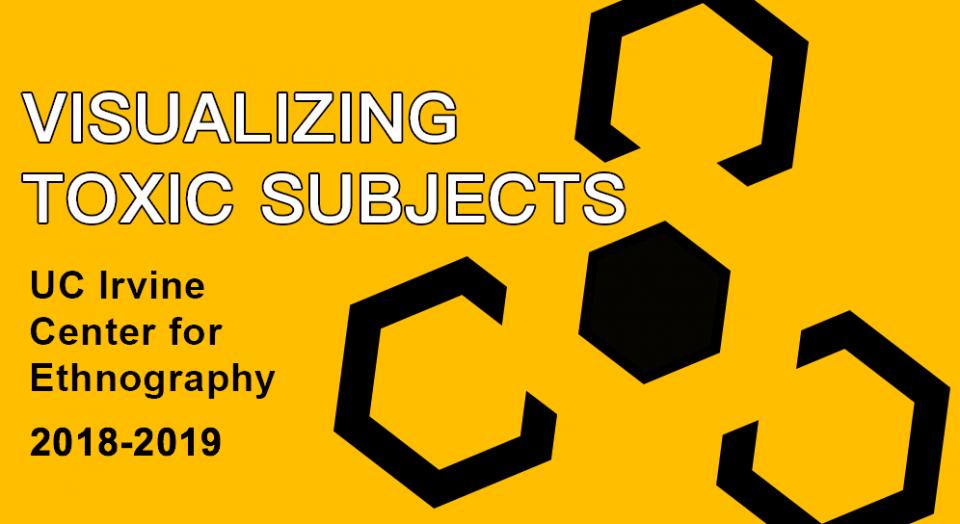
Fortun, Kim and James Adams. 2019. Visualizing Toxic Subjects. University of California Irvine Center for Ethnography.
http://centerforethnography.org/content/visualizing-toxic-subjects-proje...
The Center for Ethnography 2018-2019 annual program, Visualization in Ethnography, includes a thematic seminar series, Visualization Across Disciplines, a design project, Visualizing Toxic Subjects, and a “field works” project, Soiled Grounds, in which groups of ethnographers travel together to various sites exploring a shared theme, sharing fieldnotes as they go. The program advances creative collection, production, and analysis of visualization in ethnography, cued by the wealth of visual practices and media in play in the worlds contemporary ethnographers study. The program extends the Center’s investment in new collaborative and ethnographic forms, leveraging new technical possibilities and insights on visualization from the arts, sciences, and informatics.
Visualizing Toxic Subjects is a collaborative project in which participants are collecting, captioning, sharing and commenting on ethnographic visualizations, working to update ways of using a variety of visual materials in the conduct and expression of ethnography.
Participants are building digital photo essays, an Instagram profile, and a gallery exhibit of images that convey toxicity in its many forms and guises -- environmental toxics, to be sure, but also political toxicity, toxic media or culture, and so on.
“Toxicity” is a powerful organizing rubric for this project for a number of reasons. Toxics are often illegible through dominant frameworks; they are “subaltern,” outside recognition in hegemonic terms. Toxics are also most often intersectional, resulting from and exacerbated by multiple, synergistic systems and stressors. And toxics endure and accumulate, operating exponentially and intergenerationally. Visualizing toxic subjects thus requires subversive intent, critical design, and creative use and reading of visual materials.
Participants have been encouraged to think and work with scientific visualizations, cartoons, photojournalism, advertisements, maps made by activist organizations, or many other visual materials, articulating how they push back against (sometimes manufactured) illegibility, drawing in and on ethnographic sensibilities. The challenge is to work within (and sometime against) the image density that characterizes the worlds we study and often hope to change.
The project is hosted on the Platform for Experimental Collaborative Ethnography, digital infrastructure especially designed to support research on topics beyond the reach of established terms and methods.
The VtS Gallery exhibit ran from May 28-31 in UCI’s Viewpoint Gallery with an additional gallery show seminar on the afternoon of Friday, May 31. The project's instagram profile documented the events of the week.
See a write up about Visualizing Toxic Subjects at the University of Toronto Press's blog, Teaching Culture.
Check out our Visualizing Toxic Subjects Gallery Exhibit Page!
Click here to see a digital collection of the VtS Gallery exhibit posters.
Visualizing Toxic Subjects explores different ways ethnographers can use visual representations, drawing as much from the sciences as the arts, and from visual anthropology, science and technology studies, and a broad range of critical theory. Througout the project, participants have explored diverse visualization practices and ways of thinking about visualizaton.
One goal of the Visualizing Toxic Subjects project is to advance understanding of the character and dynamics of “toxicity” and “toxic subjects” – as they play out in this historical juncture, in particular.